Bird Friendly Glass
Preserving the bird population due to bird with glass collisions is highly beneficial. Birds are important to our mental health, they contribute to our culture, our agricultural supply chain and therefore our economy. Bird-friendly glass is a great solution, whether ceramic frit, etched glass or UV marker.

(image above: Land of Lemurs, Calgary Zoo, photographer: Michael Drew)
Bird deaths, after colliding with glass, are second only to domestic cats and claim the lives of as many as 600 million birds annually in the US and Canada alone. However, there are numerous great reasons to protect bird life. Birds affect your everyday life in so many positive ways. Here’s how:
- Help reduce stress. In its simplest form, a bird’s song can be very peaceful, and will help to reduce stress and anxiety.
- Past and current cultural values. Birds are represented in paints, sculpture, poetry, and music, and have appeared in religion dating back to Ancient Egypt. Their colorful and majestic feathers have adorned both cultural tribal headdress and formal wear.
- Birds are nature’s transport agents. They help pollinate our flora and are massively important in the process of dispersing seeds and encouraging new plant growth.
- Birds Can Help Reduce Pesticides in Food Chain. Insect outbreaks alone can destroy hundreds of millions of dollars of agricultural and forest products. A recent study in the journal of Agriculture, Ecosystems and Environment, Michigan State University scientists that farmers who manage their land to attract birds can reduce the amount of pesticides they inject into our food chain! A huge benefit while simultaneously boosting profitability.
- Birds are beautiful. Bird-watching is one of the fastest growing past times in North America. About 50 million Americans plan a trip or bird watching event annually. In Canada, more time is spent watching birds than gardening!
- Economic Benefit. Related to bird watching is bird watching tourism and its economic benefit for local economies. A 2011 American survey reveals that bird watchers spend nearly $41 billion annually on bird-related travel and equipment. It is noted that local economies benefit from $14.9 billion, which bird watchers spend on food, lodging and transportation. In Canada, this number could be even higher as the bird watching industry has blossomed due to the growth in the industry as a whole and Canada’s vast number of waterways and wetlands. In 2011 the US created 666,000 jobs related to bird watching expenditures.
The ways that birds affect our lives is staggering. Consider the value of birds in current dollars. It is beyond our imagination.
A Bird’s Eye View – Why Bird’s Collide with Glass
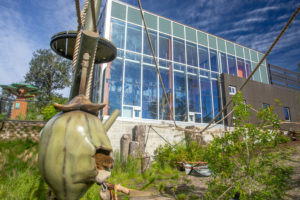
Firstly, the physical placement of the majority of flight birds’ eyes is on the sides of their head called monocular vision. This is because during flight, birds are typically most concerned with the passing objects at their side while they search for food and protect themselves from approaching predators. Prior to urbanization, birds did not need to make quick decisions about the objects in their direct path.
Secondly, birds cannot learn visual cues like humans. Humans learn to see glass through a combination of experience and visual cues. Visual cues include mullions and window frames, dirt on glass, as well as glare and/or reflection. Very shortly after we start walking, we learn the difference between a clear passage or one that is obstructed by glass. Most birds’ first encounters with glass are fatal when they collide with it at full flight. Birds see reflections of vegetation, dark nesting spaces (which appear due to dimly lit corners of an interior space) and sky in a window and respond to it as if the reflections are reality. This is especially troubling because unlike natural hazards which kill weaker birds, glass will take any strong, healthy, virile bird.
Sky’s the Limit: Bird-Friendly Glass Solutions
In order to prevent bird’s from colliding with glass we need to provide visual cues that they can understand. We can do this by creating “noise” on the surface to deter the birds from attempting to pass through.
This noise can be created by imprinting a pattern on the surface of the glass using, ceramic frit, etched glass, or UV markers. To qualify as bird-friendly the pattern:
- needs to be on printed on Lite #1 or the outermost surface. There are exceptions which we would be happy to review with you.
- must follow strict spacing requirements, i.e., spaces cannot be greater than 2” by 4”.
- needs to be applied to a minimum of 5% of the glass’ surface.
- Will be applied to the first 12 metres above grade, the primary, or most critical zone for bird-related collision.
EXAMPLE 2′ X 4′ RULE
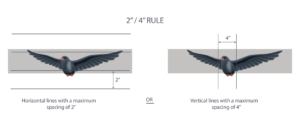
UV Markers
UV markers work to deter bird collisions because birds can see UV light in the ultraviolet spectrum (ranging from 300-400 nanometers). This technology is inspired by spider webs which also sometimes incorporate UV reflective strands of silk to encourage birds to avoid them – because even birds don’t like walking through spider webs! The great thing about UV coatings is that they appear almost clear to the naked eye.

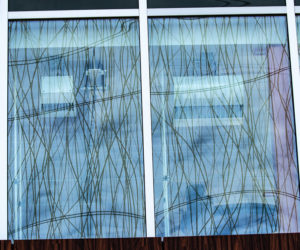
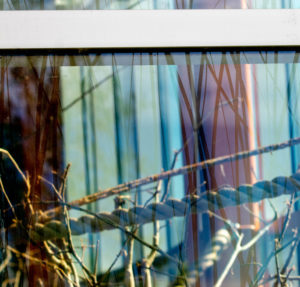
Ceramic Frit
Adding ceramic frit to your insulated glass units can also help you achieve stringent energy requirements. As you add opacity to the outer lite of glass, you are also limiting the amount of solar energy that is entering the IGU. The result is better solar heat gain and shading coefficients.
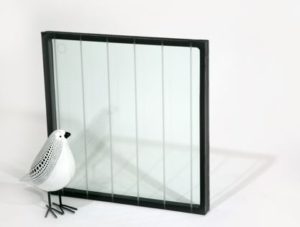
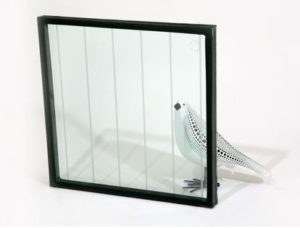
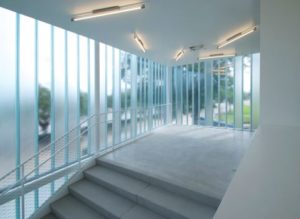
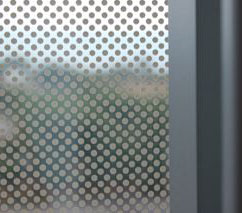
eTCHED gLASS
Historically, etched glass is the highest rated bird avoidance technology. It also offers great energy performance values and offers resistance properties that are equivalent or superior to unetched glass.
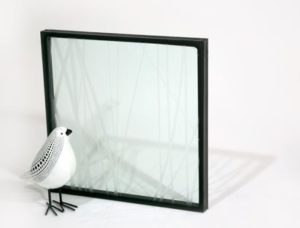
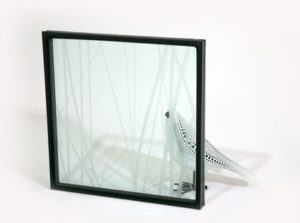
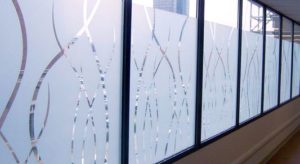
Birds of a Feather Flock Together – Jurisdictional Acceptance
The bird-friendly cause is picking up steam. Several North American jurisdictions are implementing mandatory standards as part of their building code, a short list includes: Toronto, San Francisco, Portland, Vancouver, the State of California, and the State of Minnesota. If your jurisdiction is on this list, you will need to consider and implement bird-friendly design into your building’s facade. If your jurisdiction is not on this list, it might be time to stick your beak out anyway, because it’s only a matter of time.
References:
- US Fish & Wildlife Service: https://www.fws.gov/birds/bird-enthusiasts/bird-watching/valuing-birds.php
- A Sharp Eye: http://www.asharpeye.com/soaring-popularity-bird-watching/?doing_wp_cron=1530899155.7322471141815185546875
- Environmental Health News, March 15, 2018: https://www.ehn.org/back-to-basics-tackling-farm-pests-with-predator-birds-2546940909.html
- Science Direct, April 1, 2018: https://www.sciencedirect.com/science/article/pii/S0167880918300501?via%3Dihub
- Project Beak: http://projectbeak.org/adaptations/senses_eyes.htm